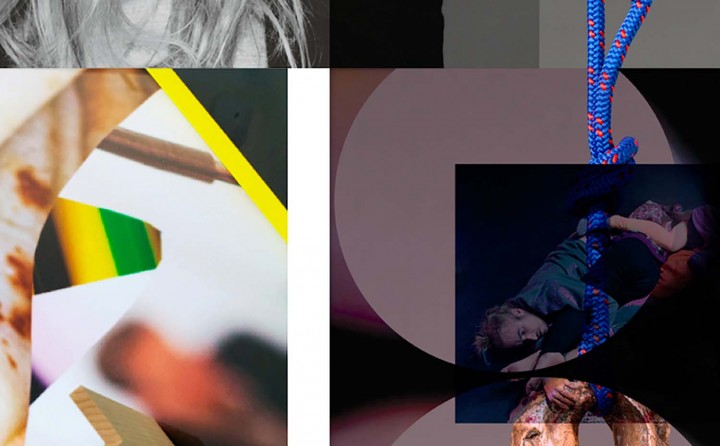Lunch Bytes was initiated in 2011 by Melanie Bühler as a series of lunchtime art conversations that would reflect on the cultural changes brought about by digital technologies.
The project has grown into an online platform and international series that examines the consequences of the increasing ubiquity of digital tools in global and local art contexts, as well as the role of the internet in a wide range of artistic practices. Flash Art talked to Bühler about how the uneasy relationship between art and digital technologies has changed since the project started.
What moved you to start Lunch Bytes?
Lunch Bytes started in 2010 when the then Goethe-Institut director in Washington, DC, Ulrich Braess, asked me to come up with an event format that could take place at lunchtime and would reflect on digital technologies within the cultural field. I had been very intrigued by artistic practices that I had seen evolving online, but I was struck by how little discourse was yet present. Lunch Bytes generated a response to this situation: a format that aims to contextualize artistic practices in the fields of digital culture for a broad audience.
What has changed since you started this discussion in 2010?
Perhaps the most obvious observation is that internet art, mostly labeled “post-internet,” at one point became fashionable. Initially discussed primarily by a few New York-based curators and artists — Gene McHugh’s blog Post Internet was important here, Artie Vierkant’s text “The Image Object Post-Internet” and also Marisa Olson’s interviews and texts — internet-related art was brought up increasingly, mostly in reference to the post-internet phenomenon.
Over the next two years the interest in internet-related art grew significantly, culminating in 2014. This was the year in which the term “art flipping” entered common parlance and post-internet was discovered as a marketable label. Both developments can be seen as symptoms of an art market whose rate of commodification has been accelerated by the implementation of social media platforms (as seen, for instance, in the ferocious use of Instagram by art collector/flipper Stefan Simchowitz, art auctioneer Simon de Pury, but also curators like Klaus Biesenbach). Unsurprisingly, the market success also correlated with a growing number of panel discussions, exhibitions and publications, of which Lunch Bytes was a part. The goal of Lunch Bytes was to facilitate reflection amid these accelerated and much-hyped developments, and open up an often narrowly defined field by examining positions thematically within the larger context of digital culture.
Lunch Bytes evolved mainly as a series of events in the United States and Europe, featuring a wide range of experts from various disciplines. Each conversation explored topics related to a broader digital field but also specific to local audiences. What is the relationship between local and global discourse?
Each event brought together local as well as international speakers. Working with local institutions ensured a connection to the discourses relevant to specific contexts. Each discussion was informed by the specific context of the city, its resources as well as its funding structures, all of which are obviously very different. At the same time, networked technologies still continue to allow people to connect over the most specific and unique things. Look for instance at the Surfing Clubs, an artist phenomenon that surfaced around 2006 and consisted of groups of artists who shared and commented on their online findings. While it provided a chance for artists to connect and share enthusiastically, artists were also astonished by cultural codes that weren’t understood or easily shared. Even though the world is getting increasingly networked, cultural differences are still present and continue to inform what is produced, viewed and commented on.
What is next in the program?
The publication No Internet, No Art: A Lunch Bytes Anthology was released last August with the Dutch publisher Onomatopee, and I am organizing a couple of events to present the anthology. It chronicles the trajectory of the series and provides an overview of some of the most important themes, as well as artistic practices that have shaped the discourse at the intersection of digital culture and art in recent years. The book reflects on the first series of events, which took place in Washington, DC. I asked the experts and artists involved to contribute texts and images based on their presentations. Supplementing these main contributions, the publication includes fourteen interviews that I conducted two years after the series, in the fall of 2014, with additional artists, curators and academics. These interviews reflect on one or more thematically related contributions and aim to contextualize important concepts and key statements.
You recently initiated a project called “Inflected Objects” encompassing a series of exhibitions, texts and commissions. The first exhibition, “Inflected Objects #1 Abstraction – Rising Automated Reasoning,” was shown from May until June at the Istituto Svizzero in Milan. What’s the relationship to the Lunch Bytes project?
Over the course of the Lunch Bytes series it has become increasingly clear to me that the “digital” as such is too broad of an umbrella and has become too loose of a concept to function as an overarching theme to denote a field of artistic practices. With “Inflected Objects” I wish to address the question of what the distinct features of the present environment, permeated by the logics of informational capital and ubiquitous connectivity, look and feel like. Having addressed the theme of abstraction in a first exhibition at the Istituto Svizzero in Milano, also including two online commissions by Sophie Jung and Jenna Sutela, the project will continue to unfold over the course of the next two years.



